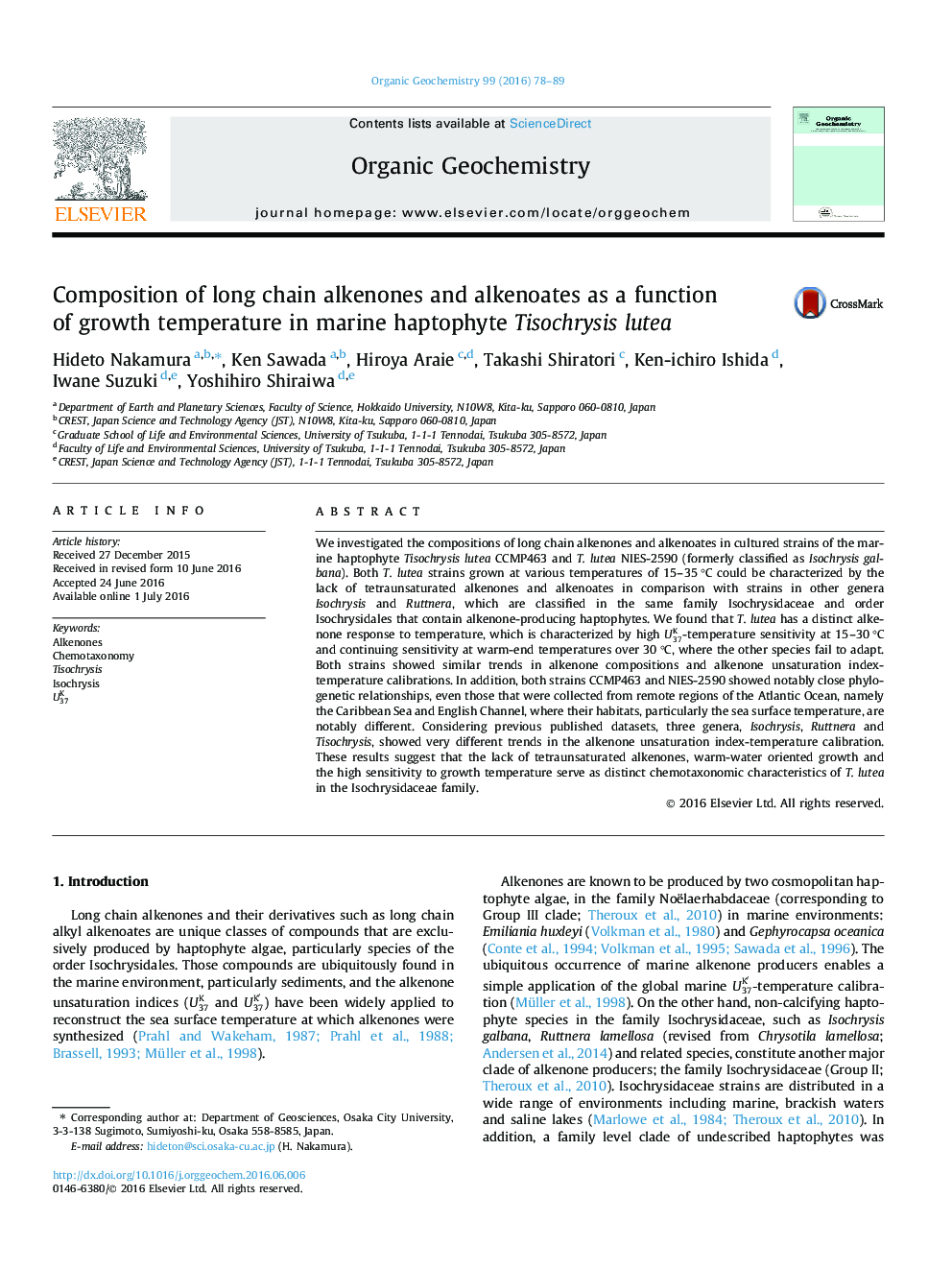| Article ID | Journal | Published Year | Pages | File Type |
|---|---|---|---|---|
| 5161651 | Organic Geochemistry | 2016 | 12 Pages |
Abstract
We investigated the compositions of long chain alkenones and alkenoates in cultured strains of the marine haptophyte Tisochrysis lutea CCMP463 and T. lutea NIES-2590 (formerly classified as Isochrysis galbana). Both T. lutea strains grown at various temperatures of 15-35 °C could be characterized by the lack of tetraunsaturated alkenones and alkenoates in comparison with strains in other genera Isochrysis and Ruttnera, which are classified in the same family Isochrysidaceae and order Isochrysidales that contain alkenone-producing haptophytes. We found that T. lutea has a distinct alkenone response to temperature, which is characterized by high U37K-temperature sensitivity at 15-30 °C and continuing sensitivity at warm-end temperatures over 30 °C, where the other species fail to adapt. Both strains showed similar trends in alkenone compositions and alkenone unsaturation index-temperature calibrations. In addition, both strains CCMP463 and NIES-2590 showed notably close phylogenetic relationships, even those that were collected from remote regions of the Atlantic Ocean, namely the Caribbean Sea and English Channel, where their habitats, particularly the sea surface temperature, are notably different. Considering previous published datasets, three genera, Isochrysis, Ruttnera and Tisochrysis, showed very different trends in the alkenone unsaturation index-temperature calibration. These results suggest that the lack of tetraunsaturated alkenones, warm-water oriented growth and the high sensitivity to growth temperature serve as distinct chemotaxonomic characteristics of T. lutea in the Isochrysidaceae family.
Keywords
Related Topics
Physical Sciences and Engineering
Chemistry
Organic Chemistry
Authors
Hideto Nakamura, Ken Sawada, Hiroya Araie, Takashi Shiratori, Ken-ichiro Ishida, Iwane Suzuki, Yoshihiro Shiraiwa,
